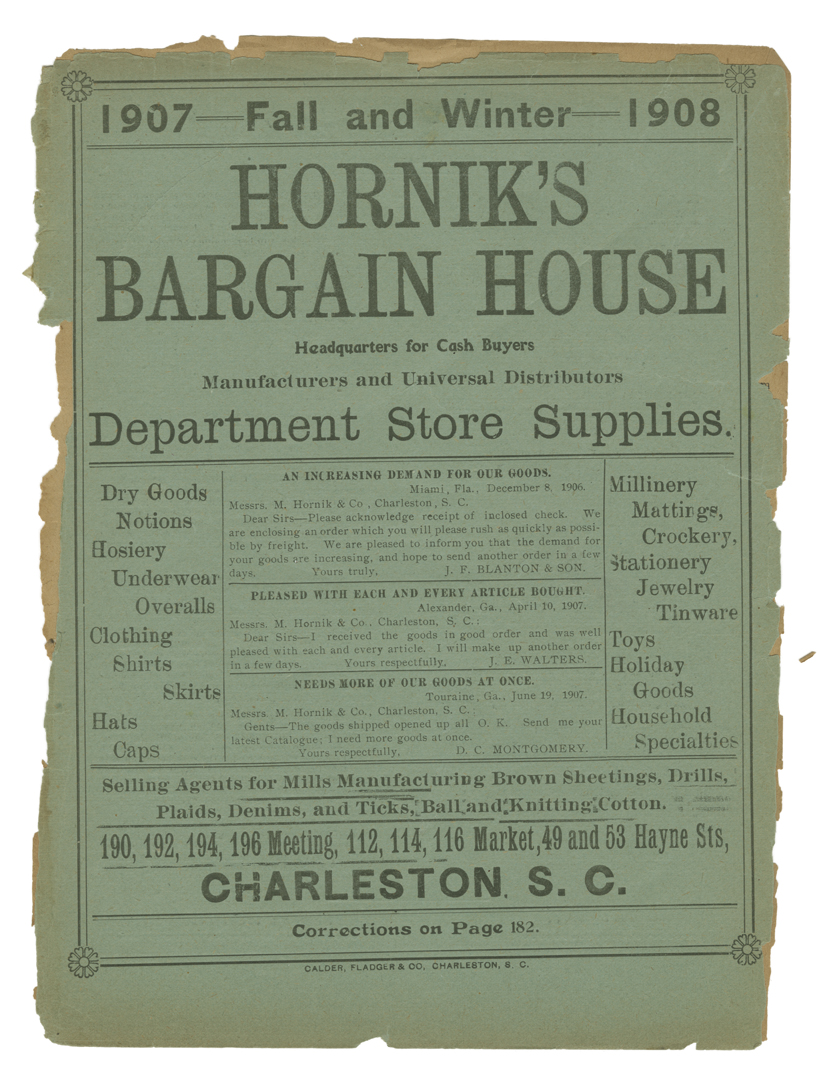Louis Cohen | William B. Cohen | M. Hornik
When Prussian native Louis Cohen (1831–1914) immigrated to South Carolina, he began work as a tailor. In 1865, he opened a dry goods store here at “The Bend” on King Street, the heart of Charleston’s retail district. Louis Cohen & Co., one of the largest department stores in the state, remained at this location until 1926, when the Belk-Simpson Company bought the property.
The building had a greater significance for the larger Jewish community. In 1903, the Young Men’s Hebrew Association, which had met at the Mechanic’s Union Hall (424 King Street) for a decade, reorganized with a substantial membership, and moved its headquarters to Louis Cohen & Co.’s building. The group moved again sometime after the Cohens expanded the business in 1905, connecting the King Street store through the block to 203 Meeting Street, where there was a separate entrance to the department store.
When Louis Cohen retired, his son William B. Cohen became president of Louis Cohen & Co., but the elder Cohen retained his status as one of King Street’s leading businessmen. He and his family lived at 128 Wentworth Street. As a mark of respect, when Louis died, “the retail stores of the city closed their doors from the hour of the funeral”—3:30 P.M. on Tuesday, February 14, 1914—“until 5 o’clock.”
At William B. Cohen’s retirement, M. Hornik became president of M. Cohen & Company. Morris Hornik (1863–1937) was born in Jaroslaw, Austria (present-day Poland), to a grain merchant family. At the age of fourteen, he immigrated to the United States, via London and New York City; in 1888, he moved to Charleston and opened M. Hornik, a clothing store, at 188 King Street, which later moved to Meeting Street as a wholesale operation.
In 1926, Cohen and Hornik cooperated on the sale of the store building to Belk-Simpson, and then Hornik reopened the store, still doing business as M. Cohen & Co., at 201 Meeting Street. This smaller operation did not survive the Great Depression.
The site of Louis Cohen & Co. became part of the Charleston Place complex in the 1980s.
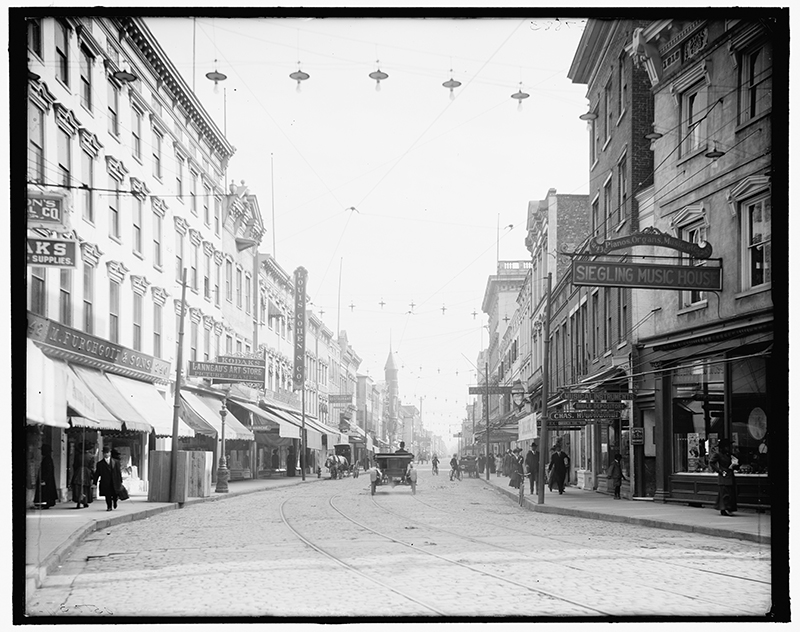
Louis Cohen & Co., streetscape
The vertical Louis Cohen & Co. sign is visible on the left-hand side of this photo of King Street, looking south, dated between 1900 and 1915. Another prominent Jewish-owned business, M. Furchgott & Sons, 240–242 King, can be seen in left foreground. Library of Congress, Prints & Photographs Division, Detroit Publishing Company Collection, reproduction number LC-DIG-det-4a25340.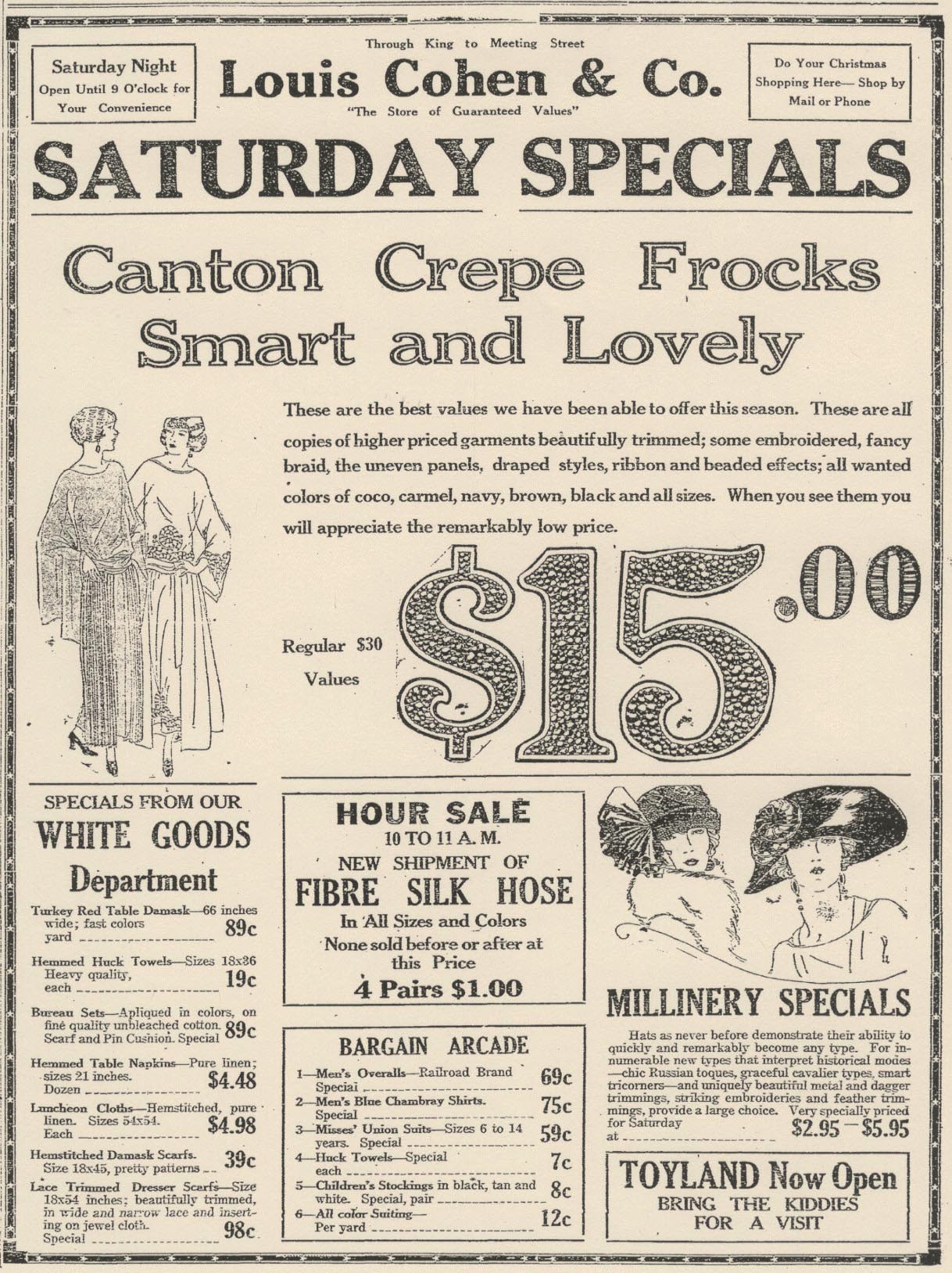
Newspaper advertisement for Louis Cohen & Co., no date
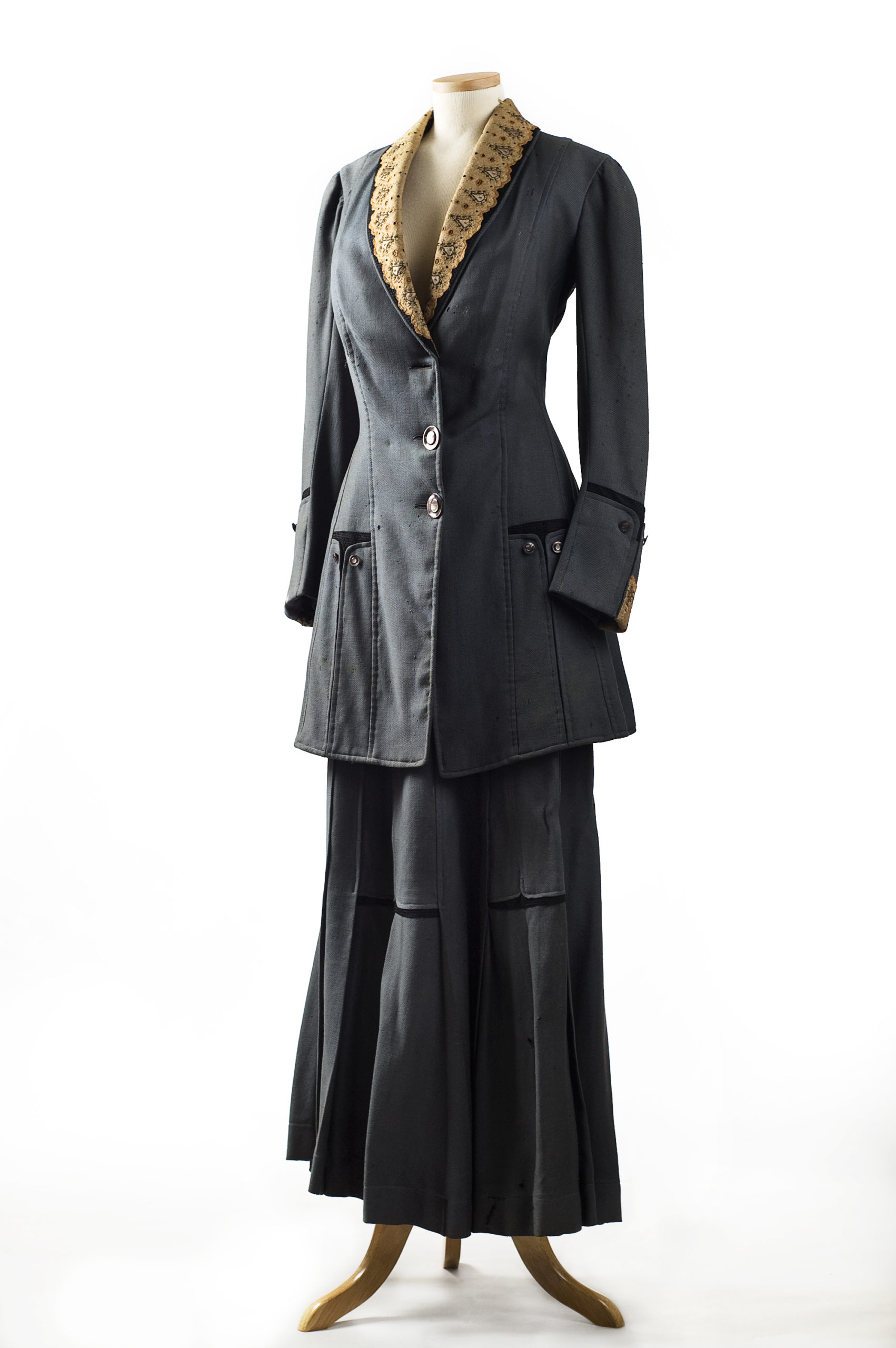
Blue wool wedding suit, 1910, from Louis Cohen & Co.
“‘You can get it at Cohen’s' has become a proverb in Charleston,” according to A New Guide to Modern Charleston, published in 1912 by Walker, Evans & Cogswell Company. Louis Cohen & Company, the guide claimed, was noted as “having the longest floor space of any store in the South.” Courtesy of The Charleston Museum, Charleston, South Carolina.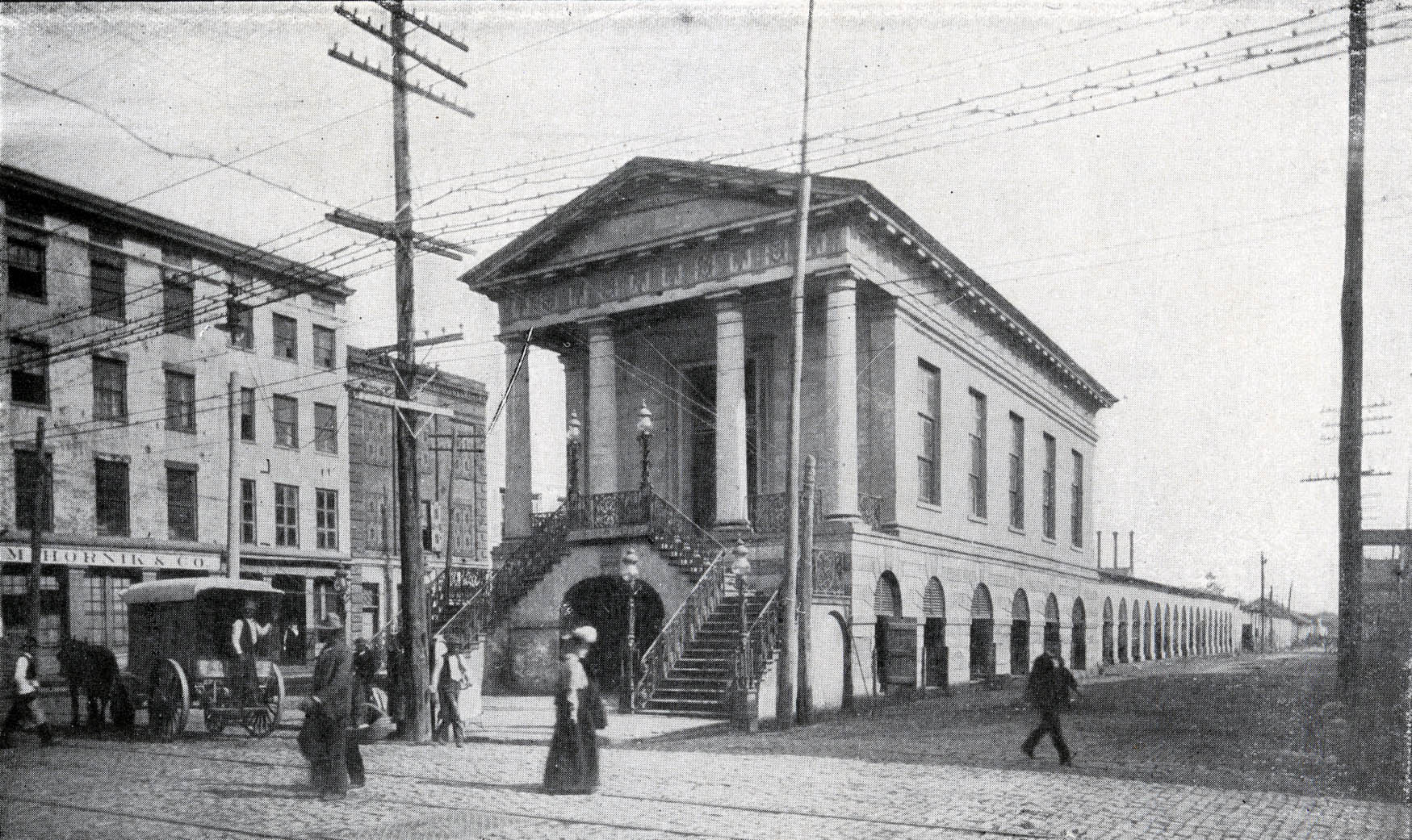
Market Hall and M. Hornik & Co. (left), corner of Meeting and Market streets
Photograph published in A New Guide to Modern Charleston by Walker, Evans & Cogswell Company, 1912.